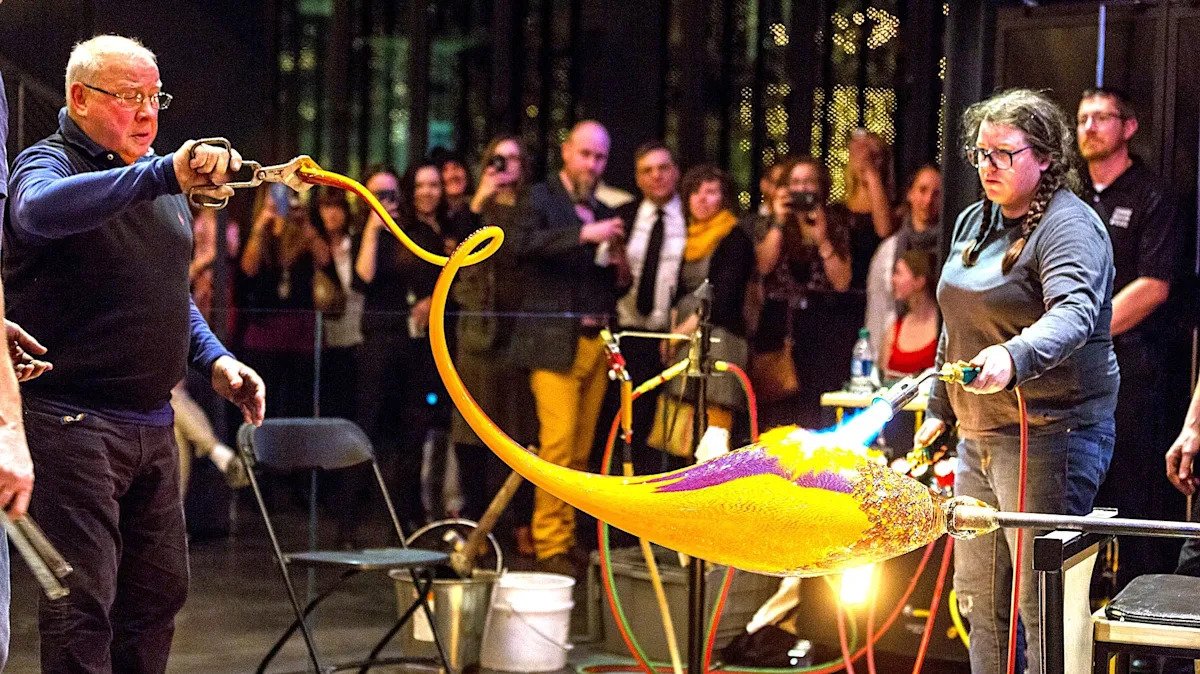I’ve owned an EV for more than a year. I scored a deal on a 2024 Hyundai Ioniq 5 SEL AWD. I’ve enjoyed the car. I’ve put more than 5,000 all-electric miles on it. I’ve evangelized about how hassle-free EV ownership can be. What I had not done was the most anxiety-inducing part of EV ownership: taking a road trip. Not a really long drive. But a 600-plus-mile round-trip trek with my wife and kids in tow, requiring planning and multiple charging stops. I finally got the chance a few weekends ago, when friends invited us to their cottage in a picturesque part of Northern Michigan best left unmentioned to New Yorkers.
The experiences in this piece are those of the author and in no way mean to suggest that everyone’s experiences will be similar or that infrastructure difficulties will always be this way.
My trip was neither perfect nor painless. But it wasn’t a complete disaster. My family made it home with relationships intact. But my experience proved eye-opening. I’m not quite ready to bail on EVs and buy a hybrid. But I have compiled a few, hopefully helpful thoughts on the infrastructure and what I’ll be looking for when I buy my next EV.
Range Is Important For EVs
This point is obvious. But it’s worth reiterating: the more range your EV has, the less stressful your road trip will be. My threshold for what constitutes “enough” range has increased since I took the road trip. The EPA estimates that my 2024 Hyundai Ioniq 5 SEL will achieve 260 miles of range on a single charge. It’s probably a hair less after a year of ownership. But we can use that for the sake of the argument. Typically, I charge to 80 percent. That gives me a little over 200 miles of range to play with in optimal conditions. I don’t commute. My kids attend school within walking distance of our home. I have a Level 2 home charger. I can get to the airport and almost anywhere in Metro Detroit using less than 50 miles of range, round trip. Range is never an issue.
Road trips are atypical. I charged to 100% before leaving. However, after that first leg, I was left with about 200 miles of range to use between stops when charging to 80% – in theory. The car’s functional range, presuming one doesn’t wish to drain the battery completely, is less than that. For me, double-digits remaining was when the anxiety began creeping in. I started cutting my speed, rationing the air conditioning, and monitoring the delta between the range and distance remaining like a hawk. Hitting my first charging stop with the car showing 30 miles of range left was cutting it closer than I would have liked.
Not everyone can afford a Lucid Air or a Rivian Max Pack. However, even increasing the range from 250 miles to above 300 miles with a vehicle like the front-wheel-drive Chevrolet Equinox EV can reduce anxiety and, potentially, make the difference between needing a second stop or shortening your trip by half an hour to 45 minutes by avoiding it.
2024 Hyundai Ioniq 5 AWD Range Versus Rivals
|
|
Max EPA Range (AWD)
|
Starting MSRP (AWD)
|
|
2024 Hyundai Ioniq 5 AWD
|
260 mi
|
$49,350
|
|
2025 Hyundai Ioniq 5 AWD
|
290 mi
|
$50,150
|
|
2025 Ford Mustang Mach E eAWD
|
300 mi
|
$40,995
|
|
2025 Tesla Model Y Long Range AWD
|
327 mi
|
$48,990
|
|
2025 Honda Prologue AWD
|
294 mi
|
$50,400
|
Range Calculators Are An Underrated Feature
My Ioniq 5 predates the 2025 refresh. The car’s performance is top-notch. However, the software to manage that performance is lacking. The Ioniq 5’s range calculator determines the range with a heavy weight on previous driving. That’s fine during everyday usage. That’s not ideal for a road trip when you go from 100% city driving to less efficient highway cruising.
When I began my drive with a 100% battery charge, my car told me I had 344 miles of range. That estimate presumed I would continue city driving in warm weather and traveling more than four miles per kWh. I knew the car would not achieve that figure. But I figured 216 miles to the first charging stop would be a safe bet. We made it with 30 miles remaining after 220 miles.
My anxiety stemmed not so much from the range but from not being able to trust what the car was telling me. The delta between my remaining range and the charging stop held steady for about the first hour or so of the drive. Then it began plummeting, particularly when the remaining range fell below 200 miles. I departed our food stop with 121 miles of range and 67 miles to the charger. That delta dipped to just 30 miles by the time I parked at the charger.
The ability to plan ahead is only as good as your data. I would have loved a feature like the integrated Google Maps in GM EVs that can map you to your destination, factor in the charging stop, and provide a relatively accurate estimate of how much battery life would be left when you arrive.
Tesla Supercharger Access Wasn’t A Game Changer
One of the reasons I felt confident embarking on my first EV road trip was Tesla Supercharger access. Hyundai sent me a free NACS adapter for my Ioniq 5. Stations are well-dispersed and maintained. Stations have numerous chargers. It felt like that network would be a reliable security blanket, making road tripping easier. It wasn’t.
Adding Tesla Supercharger access didn’t add places for me to stop. Other fast-charging providers in Michigan are, for the most part, not filling the gaps. Companies like Electrify America are simply placing their chargers adjacent to Tesla Superchargers. In that scenario, there’s no reason to use Tesla’s charging. My Ioniq 5 can charge more than twice as fast on a 350 kW charger. And paying by tapping my credit card was easier.
The one time I needed Tesla Superchargers to come through it became a near nightmare. I pulled into Bay City, MI, with about 80 miles left to travel and about 95 miles to go. It was 96 degrees. I had not noticed on the PlugShare app before leaving that all Electrify America chargers there were out of service. Tesla’s eight supercharging bays were open for use. The trouble is that traffic was heavy. Most EVs on the road are Teslas. And all the bays were full.
Ford’s Blue Oval Network Was My Salvation
I waited in line for a few minutes before a bay opened up. I pulled in. The problem was that Tesla’s cord was too short. It only reaches Tesla ports on the left rear of the vehicle. The Ioniq 5 has its charger on the right side. My options were to wait by the one bay I could angle my car into or wait for two consecutive spaces to open up and claim them both. I did find salvation, but it came at a Blue Oval Network charger at a Ford dealer a mile away.
Better Infrastructure Around The EV Charger Could Make A Huge Difference
Charging time is important. But it’s only part of the time you spend off the highway. The distance to the charger and poor infrastructure around it can increase the stop time. Most EV fast chargers in Michigan reside at large big-box retailers like Meijer (or “Meijer’s” if you’re a Michigander). That’s good in a sense: Meijer stores are already strategically located at hubs. But they are typically off the main drag, around a mile or two from the highway. Driving to and fro can add three to five minutes to the stop length on both ends.
Having the charger at Meijer is great for bathroom access and potential grocery shopping. But they are typically located away from the restaurants and fast food outlets just off the highway. So, you can’t just get lunch in the dead time while charging. A typical stop could look like this: drive a half-mile east, wait in a drive-thru line for 10-15 minutes, then drive 2.5 miles back across the highway in the opposite direction (five or so minutes) to reach the charger. Spend 15-20 minutes charging. Spend another 3-5 minutes driving back to the highway.
Real time spent can be upwards of 40 minutes. Food near the chargers or chargers at food outlets could significantly reduce that time. And the time savings may even be worth having to scarf down $13 Elon dogs.
When EV Infrastructure Worked, It Was Great
But for the aforementioned snafu in Bay City, my charging experiences were pleasant. My Ioniq 5 charged like a beast on Electrify America chargers, reaching a peak of 220 kW. Going from 13% to 80% took a little over 20 minutes.
I also found a bank of 160 kW fast chargers at City Hall in Cheboygan, MI. None of them were in use on a Saturday night. I left the car on the charger while we got the kids ice cream and stopped for an outdoor beer. It was 100 percent full when I returned an hour or so later. It also allows me to tap my card to pay, rather than using an app. The extra charging allowed us to take a detour to a lighthouse on the way home.
























You must be logged in to post a comment Login